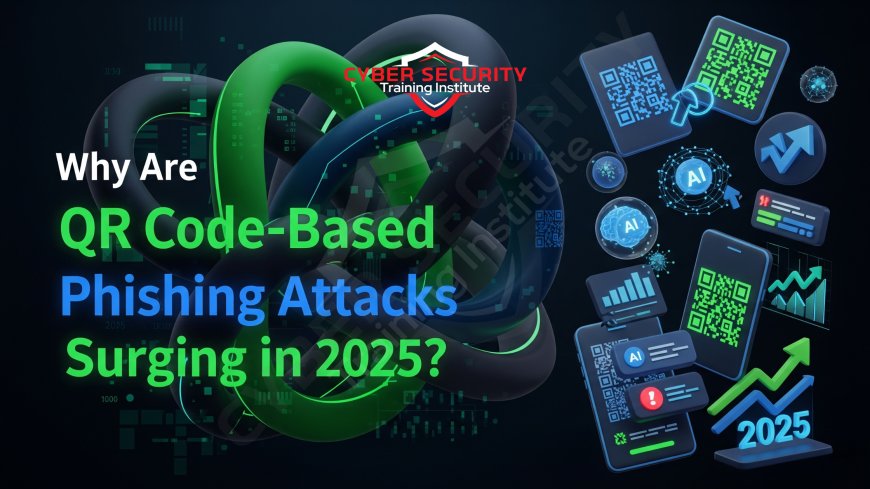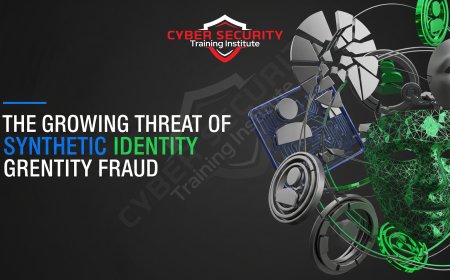Why Are QR Code-Based Phishing Attacks Surging in 2025?
In 2025, QR code-based phishing, or "quishing," is surging as a top cyber threat because it effectively bypasses traditional email security gateways by hiding malicious links in images. Attackers are exploiting the public's ingrained trust in QR codes to redirect users to phishing sites on their less-secure mobile devices, creating a major blind spot for corporate defenses. This detailed analysis explains the technical and psychological drivers behind the 2025 quishing surge, including the rise of "Quishing-as-a-Service" platforms. It breaks down the attack flow and provides a CISO's guide to the necessary multi-layered defense, emphasizing advanced email security, Mobile Threat Defense, and critical user training.

Table of Contents
- The Surge of the "Quish": A 2025 Threat Phenomenon
- The Old Lure vs. The New Disguise: The Malicious Link vs. The Malicious Image
- Why Now? The Drivers Behind the QR Code Phishing Surge
- Anatomy of an Attack: The Corporate Quishing Workflow
- Comparative Analysis: The Core Reasons for Quishing's Effectiveness
- The Core Challenge: The Off-Network Security Blind Spot
- The Future of Defense: A Multi-Layered, Mobile-First Strategy
- CISO's Guide to Countering the Quishing Wave
- Conclusion
- FAQ
The Surge of the "Quish": A 2025 Threat Phenomenon
In August 2025, QR code-based phishing attacks, a technique now widely known as "quishing," are surging because they have proven to be an incredibly effective evasion vector that bypasses traditional email security controls. Attackers are exploiting the widespread public trust in QR codes—a technology that has become ubiquitous in daily life in India and globally for everything from UPI payments to restaurant menus. By embedding malicious links within these images, they successfully redirect users to phishing sites via their less-secure mobile devices, creating a significant and dangerous blind spot for corporate security teams.
The Old Lure vs. The New Disguise: The Malicious Link vs. The Malicious Image
The traditional phishing attack was a battle fought over text-based hyperlinks and malicious attachments. In response, enterprises invested heavily in sophisticated email security gateways that became highly effective at analyzing URLs, scanning text for malicious intent, and detonating attachments in sandboxes. The defense was built to inspect text and files.
Quishing completely sidesteps these defenses by changing the nature of the lure. The malicious link is no longer present as text; it is encoded within an image—the QR code. To most email security scanners, this is just a benign picture, not a dangerous hyperlink. This simple disguise shifts the point of compromise from the heavily fortified corporate desktop and email client to the user's mobile phone camera and browser, an environment where corporate security has far less visibility and control.
Why Now? The Drivers Behind the QR Code Phishing Surge
The explosion of quishing as a mainstream attack vector in 2025 is not accidental. It is the result of a perfect storm of technological loopholes and human psychology.
Driver 1: Proven Evasion of Advanced Email Security: As defensive AI has become better at blocking malicious links and text, attackers have been forced to find a reliable way into the user's inbox. Hiding the malicious URL inside an image is a simple and effective technique to bypass even expensive, next-generation email security platforms.
Driver 2: Complete Social Saturation and Trust: By 2025, QR codes are a fully integrated and trusted part of daily life. Users are deeply conditioned to scan them quickly and without suspicion for a multitude of legitimate purposes. Attackers are now capitalizing on this deeply ingrained, learned behavior.
Driver 3: The Rise of "Quishing-as-a-Service": The dark web now features easy-to-use toolkits that automate the entire quishing process. These services provide templates for the bait email, the QR code generation, and the pixel-perfect replication of common login pages, allowing any criminal to launch these attacks at scale.
Anatomy of an Attack: The Corporate Quishing Workflow
A typical corporate quishing attack is dangerously efficient.
1. The Bait Email: An employee receives an email that appears to be from their internal IT department. The subject line reads: "Urgent Action Required: Multi-Factor Authentication Re-verification." The email body is minimal, containing the company logo and a large QR code, with a simple instruction: "Please scan the code with your mobile device to re-sync your MFA token and avoid account lockout."
2. The Scan and Redirect: The employee, concerned about losing access, immediately scans the code with their mobile phone. Their phone's default browser application opens and directs them to a URL that was encoded in the QR code.
3. The Phishing Page: The website the user lands on is a pixel-perfect clone of their company's Microsoft 365 or Google Workspace single sign-on (SSO) page, rendered on their mobile screen.
4. The Credential Theft: The unsuspecting employee, believing they are on a legitimate company page, enters their username and password. The attacker's server captures these credentials in real-time and often proceeds to an Adversary-in-the-Middle (AiTM) attack to also steal the session cookie, completely bypassing their MFA.
Comparative Analysis: The Core Reasons for Quishing's Effectiveness
This table highlights why this attack vector has become so successful.
| Driving Factor | Technical or Psychological Mechanism | Why It Is So Effective |
|---|---|---|
| Email Filter Evasion | Hiding the malicious URL inside an image (the QR code), which is not typically analyzed for malicious links by email scanners. | It guarantees the malicious lure reaches the user's inbox, successfully bypassing the most powerful and expensive layer of corporate cyber defense. |
| The Mobile Device Bridge | The attack transitions the user from a monitored and protected corporate desktop to an often unmanaged and less secure mobile device. | The attack occurs in an unprotected environment, and the small screen of a mobile device makes it much harder for users to scrutinize URLs for signs of forgery. |
| Exploitation of User Trust | Leveraging the public's deep conditioning to see QR codes as a safe, modern, and convenient technology for everyday tasks. | Users have a significantly lower level of suspicion for a QR code than for a strange-looking hyperlink presented in the body of an email. |
| Obfuscation of the Destination | The malicious destination URL is completely invisible to the user until after they have already scanned the code and initiated the action. | It removes the user's primary defense mechanism of hovering their mouse over a hyperlink to inspect the destination URL before clicking. |
The Core Challenge: The Off-Network Security Blind Spot
The fundamental challenge for corporate security teams is a complete loss of visibility and control. The moment the employee scans the QR code with their phone, the entire malicious interaction moves "off-network" from the perspective of the company's security stack. The Security Operations Center (SOC) is blind to the phishing site the user is visiting on their mobile browser and has no way to see the credentials being entered. The attack happens in a complete security blind spot where the company's defensive tools are not present.
The Future of Defense: A Multi-Layered, Mobile-First Strategy
There is no single silver bullet to stop quishing. An effective defense requires a modern, multi-layered strategy that can address the threat at different stages. The future of defense includes: Advanced Email Security platforms that use computer vision and Optical Character Recognition (OCR) to detect and analyze QR codes within the body of emails; Mobile Threat Defense (MTD) solutions that can protect the mobile device itself by blocking connections to known malicious sites; and, most critically, a renewed focus on continuous Security Awareness Training that specifically teaches employees to be highly suspicious of unsolicited QR codes.
CISO's Guide to Countering the Quishing Wave
CISOs must act decisively to counter this highly evasive threat.
1. Assume Your Current Email Filters Will Fail: Your security strategy must start with the assumption that quishing emails will successfully reach your employees' inboxes. Therefore, your defensive focus must be on the human element and the mobile device endpoint.
2. Launch a "Stop. Think. Verify." QR Code Awareness Campaign: Immediately update your security awareness training to include specific modules on quishing. The message should be simple and clear: If you receive an unexpected QR code in a work email that asks you to log in or perform a security action, do not scan it. Independently verify the request through a separate, trusted channel.
3. Prioritize Mobile Device Security: If your employees access corporate resources on their mobile phones, an MTD solution is no longer a luxury but an absolute necessity. It is the only technical control that can provide visibility and protection at the actual point of compromise for a quishing attack.
Conclusion
The surge in QR code phishing in 2025 is a direct result of attackers' innovation in exploiting the gap between traditional email security and the modern, mobile-centric way we work. By hiding their attacks in plain sight within a trusted and ubiquitous image format, they successfully bypass expensive technical controls and target the ingrained trust of human users. Defending against this requires a modern, multi-layered approach that secures the mobile endpoint and, most importantly, re-educates employees to view these now-commonplace black-and-white squares with a new and healthy dose of suspicion.
FAQ
What does "Quishing" mean?
Quishing is a combination of the words "QR code" and "phishing." It is a phishing attack that uses a QR code to deliver the malicious link to the victim.
Why can't my email filter block these emails?
Because the malicious URL is hidden inside an image (the QR code). Many email security scanners are designed to analyze text for malicious links but do not have the capability to scan images for embedded URLs.
Are QR codes inherently dangerous?
No, the QR code technology itself is safe. It is simply a method of storing information, usually a URL. The danger comes when attackers use them to hide links to malicious and fraudulent websites.
How can I safely check a QR code?
It is very difficult. The safest method is to not scan unsolicited or unexpected QR codes at all. Some mobile security apps offer "safe scanner" features that can preview a URL before opening it.
What is a "Quishing-as-a-Service" platform?
It is a type of illicit service on the dark web where attackers sell pre-packaged toolkits that allow even unskilled criminals to easily create and launch quishing campaigns.
What is Optical Character Recognition (OCR)?
OCR is a technology that allows a computer to analyze an image and recognize and extract any text within it. Advanced security tools can use this to find URLs or suspicious text within an image.
What is Mobile Threat Defense (MTD)?
MTD is a category of security solutions designed to protect mobile devices (smartphones, tablets) from a variety of threats, including malware, network attacks, and phishing.
Is it safe to scan QR codes in public, like at restaurants?
Generally, yes, but caution is advised. Attackers have been known to place malicious QR code stickers on top of legitimate ones. Be wary if a code looks like a sticker placed over another one.
Can a QR code itself contain a virus?
No, a standard QR code cannot contain an executable virus. It can only contain data. The threat is almost always the malicious website that the QR code links to.
What is the biggest red flag in a quishing email?
A sense of extreme urgency (e.g., "Your account will be locked!") combined with an instruction to perform a security action by scanning a QR code is a major red flag.
Does my phone's camera app protect me?
No. Most built-in camera apps are designed to simply read the code and open the link. They do not have security features to analyze whether the destination link is safe or not.
Why do these attacks target mobile phones?
Because mobile phones are the device used to scan QR codes, they often lack the enterprise-grade security software found on corporate laptops, and their smaller screens make it harder for users to spot fake URLs.
Can this attack steal more than just my password?
Yes. The fake website can be designed to steal any information, including MFA codes, answers to security questions, or personal financial information. It can also be used to trick you into downloading malware.
How do I report a quishing email?
You should report it to your company's IT or security department using the same process you use for any other phishing email, such as a "Report Phishing" button in your email client.
Do URL shorteners make quishing more dangerous?
Yes. Attackers often encode a shortened URL (like from bit.ly) within the QR code to make it even harder for any security tool or user to determine the final, malicious destination.
What should I do if I accidentally scanned a malicious code?
If you scanned it but did not enter any information, immediately close the browser tab. If you did enter your password, you must change it on the real service immediately and report the incident to your IT department.
Is it safer to scan a QR code on a screen than on a piece of paper?
Not necessarily. The delivery method (screen or paper) does not change the risk. The risk is determined by the source and context of the QR code. An unsolicited QR code in an email is always high-risk.
What is an Adversary-in-the-Middle (AiTM) attack?
An AiTM attack is a sophisticated phishing technique where an attacker's server acts as a proxy between you and the real website to steal not just your password and MFA code, but your session cookie as well.
Why is there a "blind spot" for security teams?
Because the moment a user scans the code with their mobile phone, the interaction moves to the phone's browser and cellular connection, which are typically outside the visibility of the company's network security tools.
What is the number one rule to avoid becoming a victim?
Treat a QR code in an unexpected email with the same level of suspicion as you would treat a suspicious hyperlink. If you would not click the link, do not scan the code. Always verify through a separate channel.
What's Your Reaction?
 Like
0
Like
0
 Dislike
0
Dislike
0
 Love
0
Love
0
 Funny
0
Funny
0
 Angry
0
Angry
0
 Sad
0
Sad
0
 Wow
0
Wow
0














